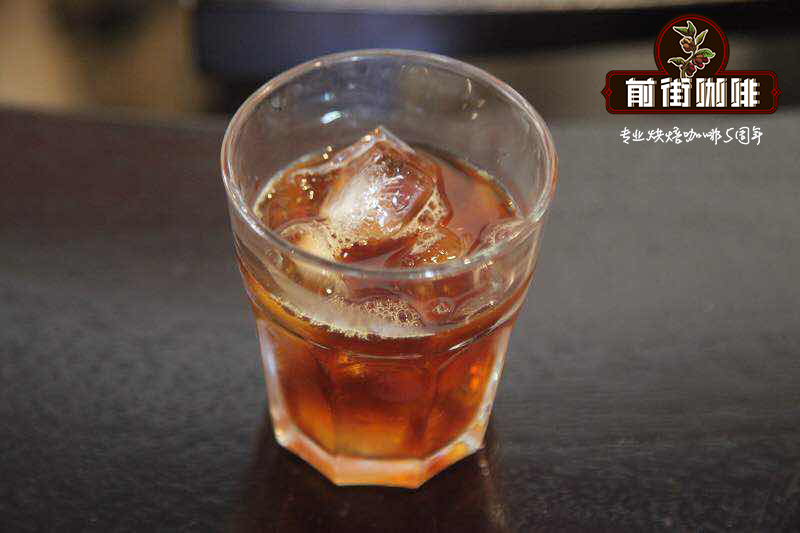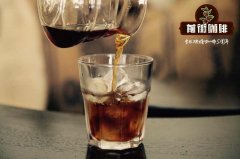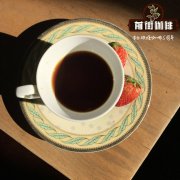How to cook freshly ground coffee powder? which are the two ways to brew individual coffee?

Professional coffee knowledge exchange more coffee bean information please follow the coffee workshop (Wechat official account cafe_style)
Qianjie-A brief introduction to the hand-brewing mode of individual coffee
First, hand-flushing the pot:
Hand brewing pot is a way that many people like, you can feel the coffee liquid leave slowly while soothing, and the coffee flavor is soft and rich by hand.
The gouache ratio of hand flushing is generally fine between 1:10 and 1:16. If you like coffee with a light taste, you can choose the powder-to-water ratio of 1:14-1:16; for those with strong taste, you can choose the powder-to-water ratio of 1:10-1:11; for those who are not strong, but with moderate taste, you can choose the powder-to-water ratio of 1:12-1:13.
Second, the French kettle:
The French kettle is relatively easy to operate, but because there are small coffee grounds inevitably, many people do not like to use it. When using a pressure pot to make coffee, it is generally possible to brew coffee according to the ratio of powder to water at 1:15-1:18, and the water temperature is between 88 and 94 degrees.
3. Mocha pot:
Mocha teapot has 3 people, 9 people, 12 people and so on. You can choose the specifications you need. Mocha pots are usually brewed according to the powder-to-water ratio of 1:12 to 1:18. In most cases, the lower pot of the mocha pot has a safety valve, and its position is where the water level arrives. In addition, the powder trough is filled and paved without pressure.
4. Siphon pot:
Siphon pots vary in size according to the number of people. Siphon pots are usually brewed according to the ratio of powder to water from 1:12 to 1:20. If you use a person's 130ml coffee, you may need to add 150ml of water, about 8-10g of coffee powder. Different sizes can be increased proportionally according to the quantity of each person.
Fifth, love music pressure:
The water-to-powder ratio of Philharmonic pressure varies widely, with different coffee beans, different water temperature, different stirring and standing time, so the powder ratio varies greatly, some up to 1:3 and some up to 1:17.
So we use the amount of coffee beans as the standard, usually the amount of coffee beans used in 14g-20g, rarely can use more than 25g powder, but there are also champion cases, such as the Dublin cooking champion in 16 years with 30g powder, the first 120g water will be boiled, then 80g will be diluted. Therefore, Philharmonic pressure has a greater possibility, as long as you dare to break through the original thinking to try.
Philharmonic pressure needs to be diluted with hot water after flushing, usually according to the powder-to-water ratio from 1:13 to 1:16, but it should also be determined according to different coffee beans.
Knowledge expansion: the most common defects such as bitter, sour, light and astringent coffee are caused by poor extraction control.
In short: Qianjie is a coffee research hall, happy to share the knowledge about coffee with you, we share unreservedly just to make more friends fall in love with coffee, and there will be three low-discount coffee activities every month. The reason is that Qianjie wants to make more friends drink the best coffee at the lowest price, which has been Qianjie's tenet for 6 years!
END
Important Notice :
前街咖啡 FrontStreet Coffee has moved to new addredd:
FrontStreet Coffee Address: 315,Donghua East Road,GuangZhou
Tel:020 38364473
- Prev

A brief introduction to the characteristics of ASD Solar treatment of Coffee in Arida Coffee Manor, the World's Top Coffee Manor
Professional coffee knowledge exchange more coffee bean information please follow the coffee workshop (Wechat official account cafe_style) old Wilford Ramastus (WilfordLamastusSr.) Produces some of the most famous coffee in the world, but after I visited his award-winning Elida
- Next

What is Pokuit Coffee Manor in Panama?
Professional coffee knowledge exchange more coffee bean information please follow the coffee workshop (Wechat official account cafe_style) if Boquete is Burgundy, then Domaine de la Romanee-Conti is Hacienda la Esmeralda. It was here that the Petersons discovered an ancient family heirloom coffee called geisha, which smells like tea.
Related
- Beginners will see the "Coffee pull flower" guide!
- What is the difference between ice blog purified milk and ordinary milk coffee?
- Why is the Philippines the largest producer of crops in Liberia?
- For coffee extraction, should the fine powder be retained?
- How does extracted espresso fill pressed powder? How much strength does it take to press the powder?
- How to make jasmine cold extract coffee? Is the jasmine + latte good?
- Will this little toy really make the coffee taste better? How does Lily Drip affect coffee extraction?
- Will the action of slapping the filter cup also affect coffee extraction?
- What's the difference between powder-to-water ratio and powder-to-liquid ratio?
- What is the Ethiopian local species? What does it have to do with Heirloom native species?

